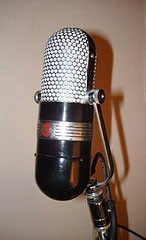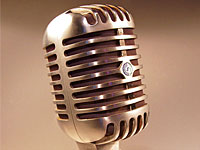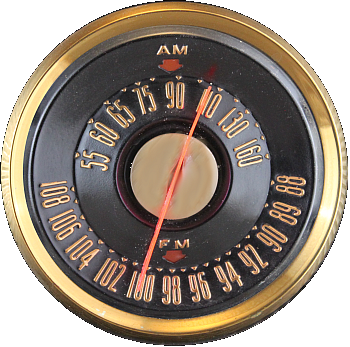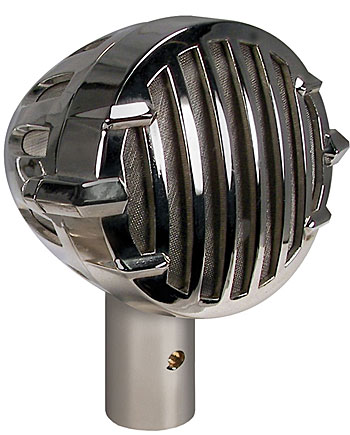In 1665 English physicist Robert Hooke did something very interesting; he demonstrated an invention that would allow two people to talk privately without being physically close to each other. They could even be in different rooms. His device was later dubbed the “lover’s telephone”; it was simply two cups connected with a taunt wire.
I don’t know if younger people still do it, but we older folks have all tried it. We think of it as a pretty simple trick. Hooke probably wasn’t the first to do it but he was the first to deconstruct the science. While scientists understood that sound was vibrations carried through air, they didn’t know what air was or what role it played. Hooke understood air was matter that expanded and contracted in reaction to pressure; it was just a medium for the vibrations. He was the first to demonstrate that sound could be transmitted through a medium other than air so he gets credit for inventing the microphone.
It wasn’t called that at the time; Sir Charles Wheatstone is thought to have coined the term in 1827. Hooke didn’t even care much about his invention but it pointed the way for scientists who, 200 years later, were trying to develop an electric microphone. They knew how to capture the vibrations with a diaphragm; the trick was getting the sound to produce, or modulate, a matching electric current. Solve that problem and you can send sound through wires to anywhere.
The quest was going on simultaneously in Britain, Europe and North America. Alexander Graham Bell got one to work in 1876. His was the first real telephone but the sound quality was poor, probably not as good as Hooke’s cup and wire. To get better quality, most scientists focused on using carbon pellets which would change their electrical resistance in reaction to pressure.
Historians tell us England’s David Edward Hughes invented the carbon microphone around 1877. Some even credit him with coining the word microphone. However Hughes was man of science, not commerce, he was happy to give his invention to the world and go back to the lab.
Eventually the courts and the U.S. Patent Office granted legal rights to Thomas Edison, a man of science and commerce who often got credit for things he didn't invent.
Whoever invented it, the carbon microphone enabled modern communication. It made radio broadcasting possible. And it looked cool, for the time at least.
Big, round and imposing, the microphone became a symbol of power. He who was behind the microphone (and it was usually a man with a big, round and imposing voice) could be heard anywhere.
Carbon microphones did have severe limitations so research continued and over the next few decades microphones improved dramatically. Several different methods of converting sound to electricity were invented, they became more specialized and sleek designs started to appear, quite a few of them are still in production over 50 years later. Microphone collectors – and there are legions of them – tend to focus on the 1930s to 1960s as the prime period. Some collect vintage microphones because of their historical significance and they look so good but for most, the sound quality is paramount. Modern, digital microphones can be very tiny and convenient but they don’t sound the same.
Academy Award winning sound mixer Jim Webb is a prominent collector who has put together a list of what he calls the Twelve Microphones That Made History (www.coutant.org/12mics).
Besides the early carbon mics he includes the Western Electric “8 ball” dynamic mic, which first appeared in 1931 and remained a standard for years.
 That same year Harry Olson of RCA came up with the first “ribbon” microphone which captured vibrations with a small metal ribbon in a magnetic field. The RCA 44-A was a staple in recording and broadcasting studios well into the 1940s. My particular favourite, the RCA 77 series debuted in 1933. Shaped like a capsule, its design is iconic. You can still see one on David Letterman’s desk on TV every night though it’s a more modern version; Larry King had a classic model on his desk. I worked a lot with 77 DX mics in my days as a radio engineer in the 1970s, they were very fragile (the ribbon broke easily) and hard to set up but oh, they had a sound that enveloped you like a warm blanket on a winter night, the aural equivalent of butterscotch.
That same year Harry Olson of RCA came up with the first “ribbon” microphone which captured vibrations with a small metal ribbon in a magnetic field. The RCA 44-A was a staple in recording and broadcasting studios well into the 1940s. My particular favourite, the RCA 77 series debuted in 1933. Shaped like a capsule, its design is iconic. You can still see one on David Letterman’s desk on TV every night though it’s a more modern version; Larry King had a classic model on his desk. I worked a lot with 77 DX mics in my days as a radio engineer in the 1970s, they were very fragile (the ribbon broke easily) and hard to set up but oh, they had a sound that enveloped you like a warm blanket on a winter night, the aural equivalent of butterscotch.
The Shure Unidyne Model 55 is another iconic and very collectable microphone. If you knew nothing about microphones and someone asked you to picture a classic microphone in your mind, chances are it would be a Unidyne 55. Its chrome grille pretty well defines style of the 1940s and 50s and it is still in production today.
Unlike cars of its time, the Unidyne’s grille is both gorgeous and functional. It was designed to cancel out sound from behind, making the Unidyne 55 a favourite for singers on stage. Shure’s SM (Studio Microphone) series of mics was introduced in the 1960s. Though not as pretty, their ruggedness and versatility make them top picks for studio and stage work even today.
Some vintage mics are valued by musicians for very specific jobs. Bullet mics, so named because of their shape, are hotly collected by blues and rock harmonica players. Early models made by Astatic in the 1940s and fifties are worth hundreds of dollars in restored condition today.
 The directional characteristics of a microphone; it’s ability to reject sounds that are farther away or behind, were just as important in the studio as on stage. Recording studios require more sensitive pickup and this is where German engineering excels. The Neumann Company introduced the condenser microphone in 1928. Using a capacitor (or condenser) these mics produce a very low signal so a single tube amplifier is built right into it. The handmade Neumann M and U series microphones, the M47 being the best known, were the gold standard for studios right up to the 1980s, as were the AKG C-12 and ELAM series mics.
The directional characteristics of a microphone; it’s ability to reject sounds that are farther away or behind, were just as important in the studio as on stage. Recording studios require more sensitive pickup and this is where German engineering excels. The Neumann Company introduced the condenser microphone in 1928. Using a capacitor (or condenser) these mics produce a very low signal so a single tube amplifier is built right into it. The handmade Neumann M and U series microphones, the M47 being the best known, were the gold standard for studios right up to the 1980s, as were the AKG C-12 and ELAM series mics.
The 1970s and 80s were bad years for sound recording. It has been dubbed “the cocaine era”. During this time most major studios pretty well abandoned recording live in one-room and used sound booths, overdubs and electronic gimmicks instead. This type of recording favours smaller mics for close-up work so those studios chucked their old ribbon and condenser microphones. Sound engineers in smaller studios started to grab them up and the microphone collecting hobby was born. Now the old style microphones (or copies of them) are back in production and the originals routinely sell for thousands of dollars each.
Today microphones are literally everywhere, many so small they can barely be seen and so cheap the cost is irrelevant. Even cheap ones do an adequate job and in the future new materials and fibre optics will almost certainly deliver far superior performance but for now, it’s hard to beat the quality and aesthetic beauty of those classic microphones.

